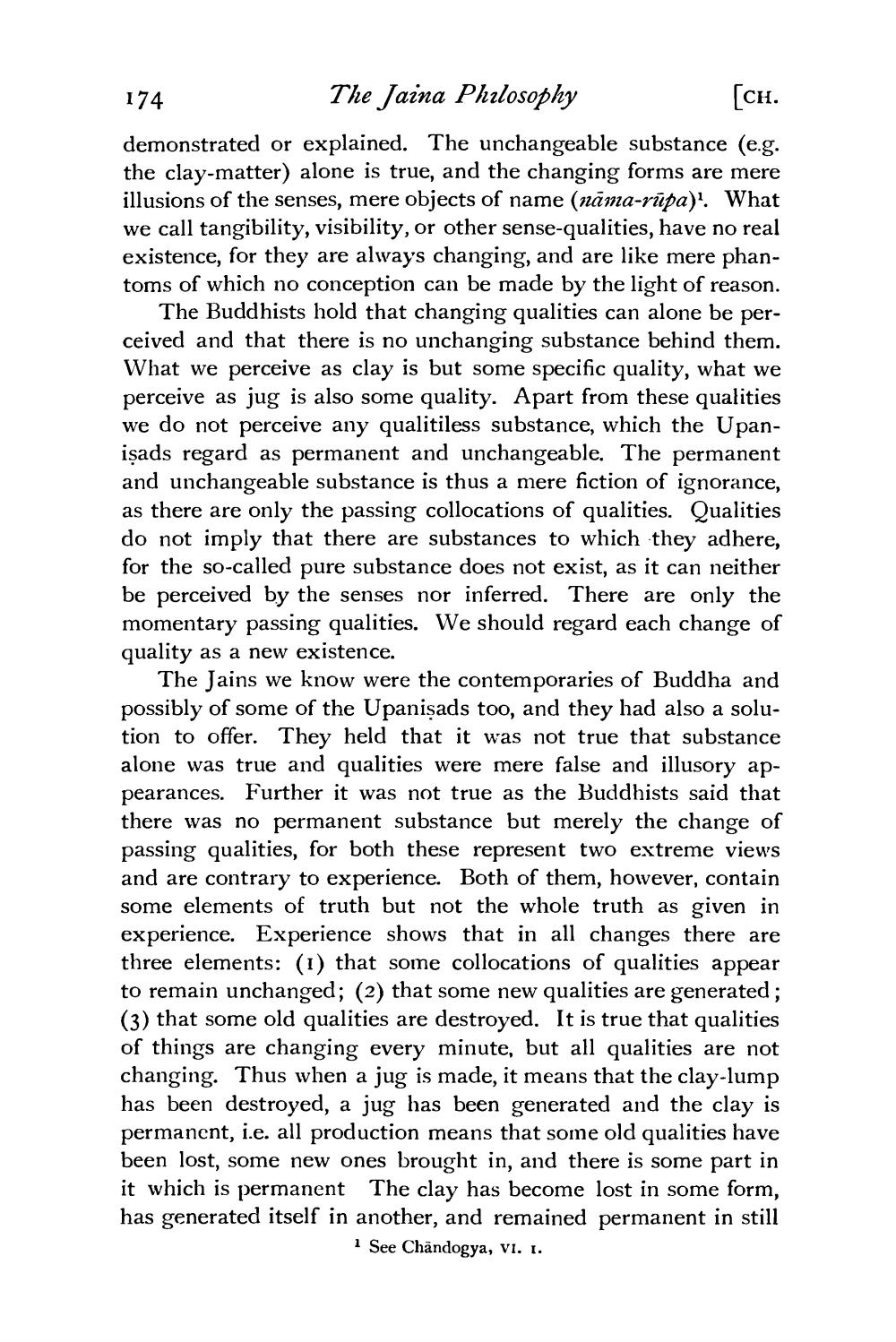________________
174
The Jaina Philosophy
[CH.
demonstrated or explained. The unchangeable substance (e.g. the clay-matter) alone is true, and the changing forms are mere illusions of the senses, mere objects of name (nāma-rūpa)'. What we call tangibility, visibility, or other sense-qualities, have no real existence, for they are always changing, and are like mere phantoms of which no conception can be made by the light of reason.
The Buddhists hold that changing qualities can alone be perceived and that there is no unchanging substance behind them. What we perceive as clay is but some specific quality, what we perceive as jug is also some quality. Apart from these qualities we do not perceive any qualitiless substance, which the Upanişads regard as permanent and unchangeable. The permanent and unchangeable substance is thus a mere fiction of ignorance, as there are only the passing collocations of qualities. Qualities do not imply that there are substances to which they adhere, for the so-called pure substance does not exist, as it can neither be perceived by the senses nor inferred. There are only the momentary passing qualities. We should regard each change of quality as a new existence.
The Jains we know were the contemporaries of Buddha and possibly of some of the Upanişads too, and they had also a solution to offer. They held that it was not true that substance alone was true and qualities were mere false and illusory appearances. Further it was not true as the Buddhists said that there was no permanent substance but merely the change of passing qualities, for both these represent two extreme views and are contrary to experience. Both of them, however, contain some elements of truth but not the whole truth as given in experience. Experience shows that in all changes there are three elements: (1) that some collocations of qualities appear to remain unchanged; (2) that some new qualities are generated; (3) that some old qualities are destroyed. It is true that qualities of things are changing every minute, but all qualities are not changing. Thus when a jug is made, it means that the clay-lump has been destroyed, a jug has been generated and the clay is permanent, i.e. all production means that some old qualities have been lost, some new ones brought in, and there is some part in it which is permanent The clay has become lost in some form, has generated itself in another, and remained permanent in still
i See Chandogya, vi. I.




